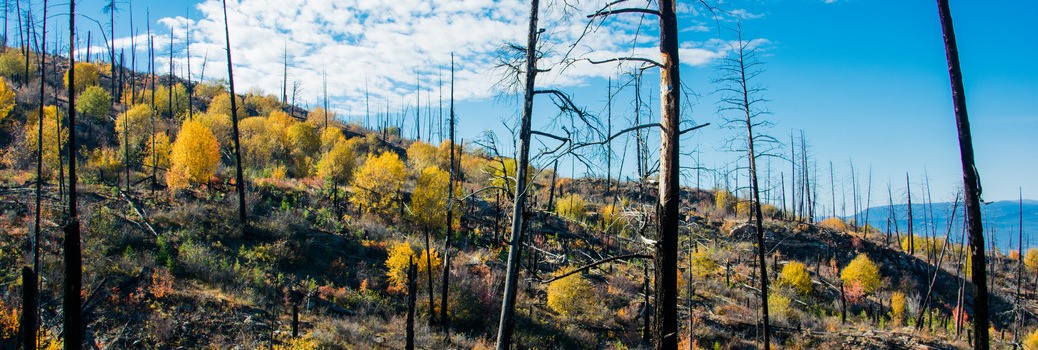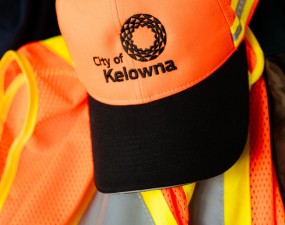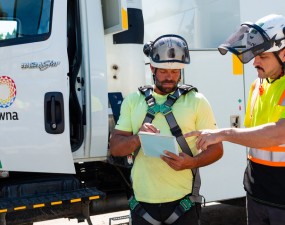Global problem – local action: Climate change & local government action in Kelowna
Topics
By Chris Ray | Jun 22, 2021
Kelowna is no stranger to the havoc climate change can cause to a community.
Back-to-back years of record spring precipitation caused historic flooding in 2017 and 2018, followed by hot, dry summers that produced droughts and wildfires.
As global greenhouse gas (GHG) emissions increase, devastating events like these are no longer anomalies – they become increased possibilities every year. This is demonstrated in a recent climate projections study for the Okanagan that shows as GHG emissions rise, we will experience hotter, drier summers, along with warmer winters and increased precipitation in all seasons except summer.
Local governments play a vital role in climate action. We have direct or indirect influence on more than half the community’s GHG emissions by managing our own municipal assets, or through policy, planning and regulation.
There is still much work to be done as the second progress report on Council Priorities 2019-2022 indicates our community’s GHG emissions are trending up.
Local governments are on the front lines of many of the major climate change impacts expected to become amplified in the years ahead – increased wildfires, flooding, and extreme weather events. So, we should be motivated to build climate resilience. Mitigating the impacts of climate change while preparing for unavoidable climate impacts is a big undertaking, but it must be done and it can have multiple benefits far beyond climate.
Through more than 4,000 community touchpoints that helped develop Imagine Kelowna – our community’s vision for our future – and recent community engagement for the 2040 Official Community Plan, the message is clear: climate action and environmental protection are top-of-mind for Kelowna residents. Our community wants to protect our land, water and air. They want to preserve Okanagan Lake as a shared resource, embrace transportation options, grow vibrant urban centres to limit sprawl and act in the face of climate change.
While we are learning as we go, Kelowna has made progress on climate action:
- Nearly 80 per cent of the actions from our Community Climate Action Plan (2018-2023) are in-progress or complete. For example, we are an early adopter of Energy Step Code and are accelerating the timelines to achieve net-zero energy ready new buildings by 2032; and we are implementing our Pedestrian & Bicycle Master Plan by expanding active transportation infrastructure. Kelowna residents are On the Move with more than 70 km of off-road pathways, more than 412 km of sidewalks and walkways, and 280 km of bike lanes available.
- In addition to planting an average of 4,000 seedlings and trees a year on City property, residents have purchased and planted more than 5,000 trees on their properties through the City’s NeighbourWoods program over the past 10 years.
- Phase 1 of the LED streetlight retrofit project (2018) reduced electricity consumption by more than 4.5 million kWh/year; equivalent to the amount of electricity needed to run around 400 homes a year. The second phase of the LED streetlight retrofit project is underway and will reduce electricity consumption by an additional 800,000 kWh once complete in 2023.
While there are many factors outside of the City’s control and a growing local population makes emissions reduction an even greater challenge, we are working on additional climate resiliency initiatives:
- We are modelling our GHG emissions reduction pathway for 2030 to align with the Intergovernmental Panel on Climate Change’s recommendations (i.e., at least a 45 per cent reduction in GHG emissions by 2030), which will inform an updated Climate Action/Resiliency Plan.
- We are finalizing the 2040 Official Community Plan with climate action and environmental protection/restoration as key pillars.
- We are completing a Community Electric Vehicle & E-Bike Strategy and Corporate Green Fleet Strategy highlighting actions to accelerate the transition to zero-emission vehicles.
- We are doing a preliminary natural asset inventory with the Municipal Natural Asset Initiative to identify and account for natural assets within our community.
- We are updating our Community Wildfire Resiliency Plan to provide strategic and actionable recommendations for reducing wildfire risk where possible.
- We have created a Champion of Environment position to review City policy related to climate action and environmental protection and to make recommendations for improvement.
Effective climate action requires long-term resourcing and continual improvement. By continually tracking and measuring our progress, as we have done through Council Priorities 2019-2022 and our Community Climate Action Plan, we can learn, adapt and improve. I am excited about the climate action initiatives planned or underway at the City of Kelowna and being a part of the global network of local governments aiming to take action on climate change.







